Carpal Tunnel Syndrome
Article Sections
Introduction
Carpal tunnel syndrome (CTS) refers to the neuropathic symptoms (eg, pain, paresthesia, weakness) caused by compression of the median nerve as it passes through the carpal tunnel, a narrow anatomic passage in the wrist bounded by the carpal bones (dorsally) and transverse carpal ligament (palmarly). CTS is the most common compressive neuropathy.
Anatomy
- The floor of the carpal tunnel (Figure 1) is an arch formed by the 8 carpal bones.
- The roof of the carpal tunnel consists of the transverse carpal ligament (flexor retinaculum), which attaches to the carpal bones laterally (scaphoid, trapezium) and medially (pisiform, hamate).
- The carpal tunnel primarily functions as a conduit for 9 of the flexor tendons that help bend the thumb and fingers during forearm muscle contraction. The transverse carpal ligament helps prevent these tendons from bowing at the wrist.
Continue Learning with UWorld
Get the full Carpal Tunnel Syndrome article plus rich visuals, real-world cases, and in-depth insights from medical experts, all available through the UWorld Medical Library.
Figures
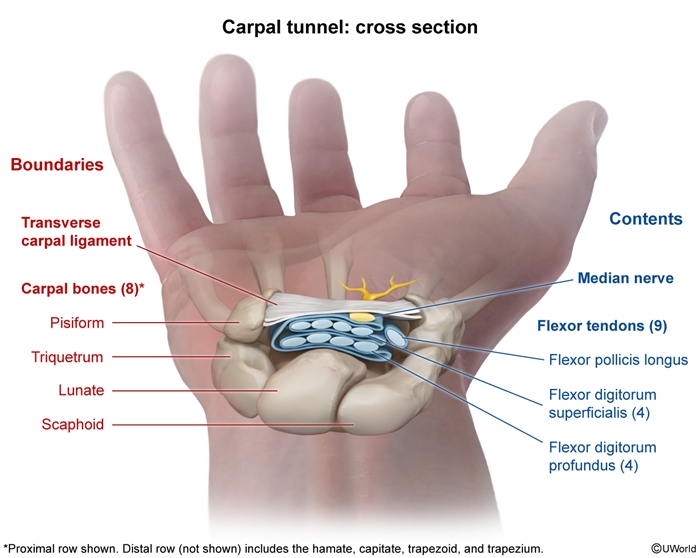
Figure 1
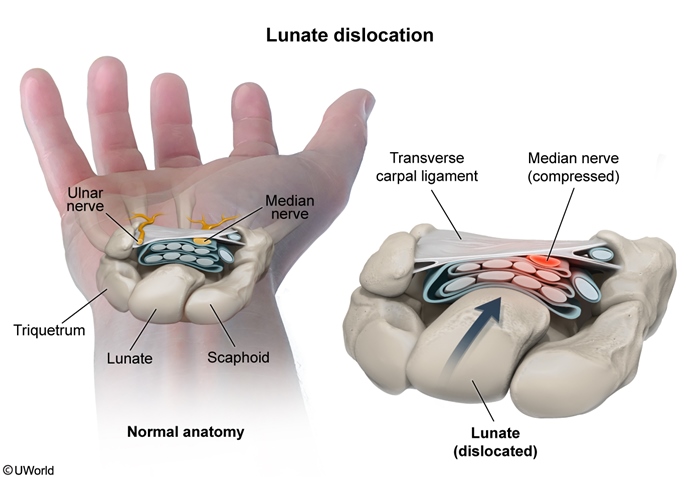
Figure 2
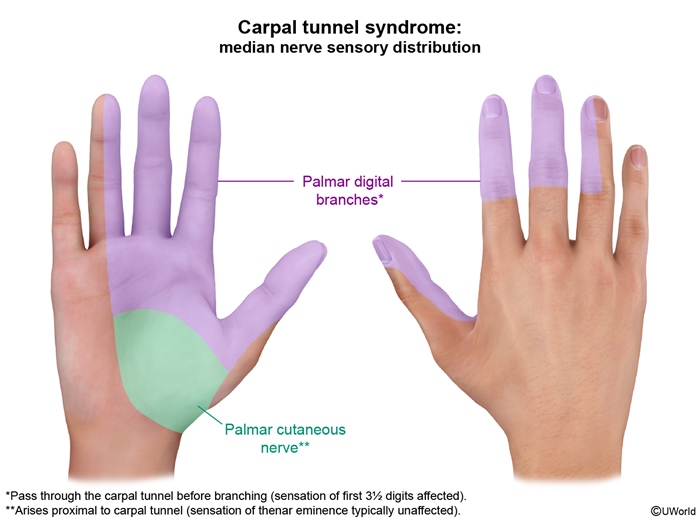
Figure 3
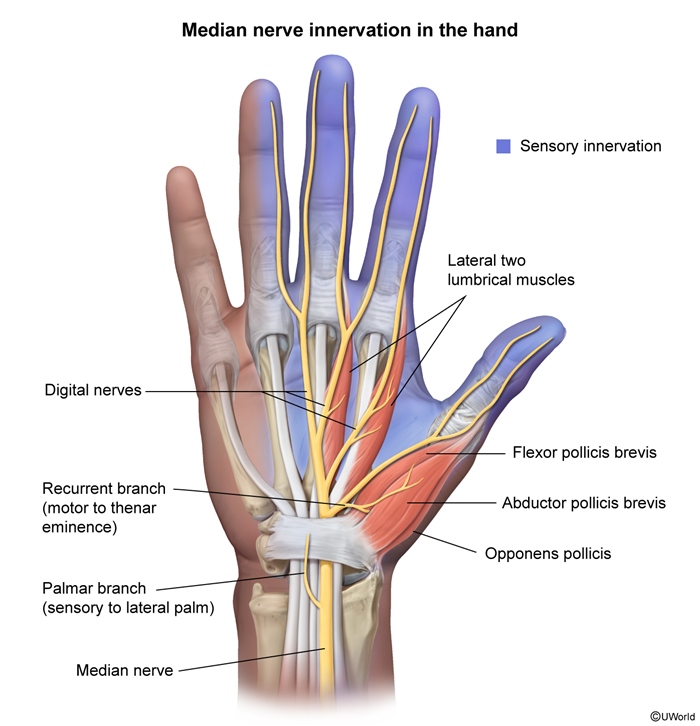
Figure 4
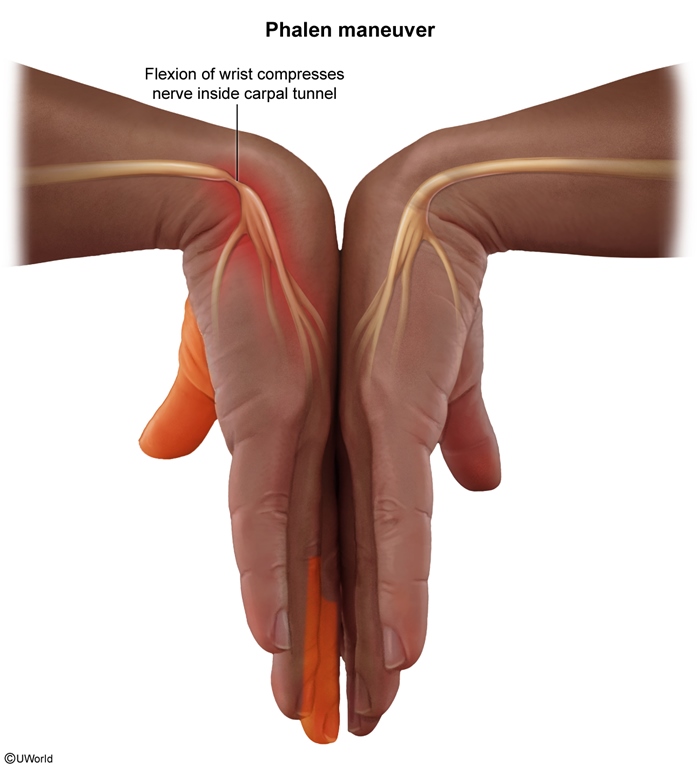
Figure 5
Images
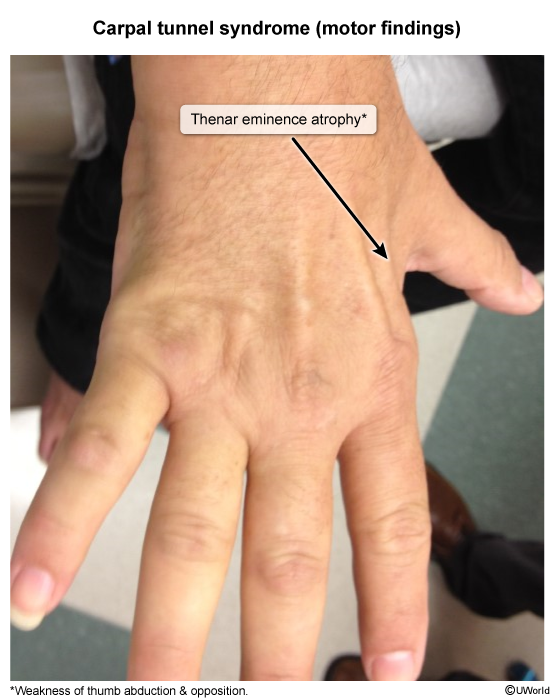
Image 1